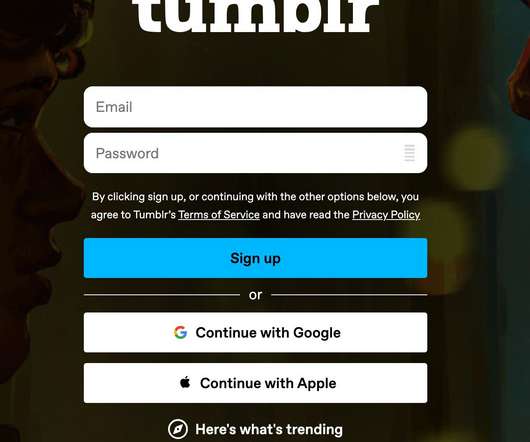The History of Social Media in 33 Key Moments
Hootsuite
APRIL 6, 2023
Unfortunately, the site’s spike in popularity in 2003 caught the company by surprise. Tumblr and the age of the microblog (2007) In 2007, the social network described as “Twitter meets YouTube and WordPress” came a-tumblin’ along when 17-year-old David Karp launched Tumblr from his bedroom. If only Bradley's arm was longer.












Let's personalize your content